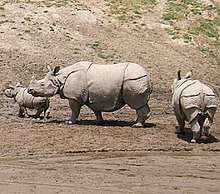List of mammals of Bhutan
This is a list of the mammal species recorded in Bhutan. There are ninety mammal species in Bhutan, of which one is critically endangered, ten are endangered, fourteen are vulnerable, and three are near threatened.[1][2]
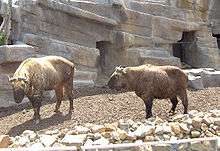
The following tags are used to highlight each species' conservation status as assessed by the International Union for Conservation of Nature:
| EX | Extinct | No reasonable doubt that the last individual has died. |
| EW | Extinct in the wild | Known only to survive in captivity or as a naturalized populations well outside its previous range. |
| CR | Critically endangered | The species is in imminent risk of extinction in the wild. |
| EN | Endangered | The species is facing an extremely high risk of extinction in the wild. |
| VU | Vulnerable | The species is facing a high risk of extinction in the wild. |
| NT | Near threatened | The species does not meet any of the criteria that would categorise it as risking extinction but it is likely to do so in the future. |
| LC | Least concern | There are no current identifiable risks to the species. |
| DD | Data deficient | There is inadequate information to make an assessment of the risks to this species. |
Some species were assessed using an earlier set of criteria. Species assessed using this system have the following instead of near threatened and least concern categories:
| LR/cd | Lower risk/conservation dependent | Species which were the focus of conservation programmes and may have moved into a higher risk category if that programme was discontinued. |
| LR/nt | Lower risk/near threatened | Species which are close to being classified as vulnerable but are not the subject of conservation programmes. |
| LR/lc | Lower risk/least concern | Species for which there are no identifiable risks. |
Subclass: Theria
Infraclass: Eutheria
Order: Proboscidea (elephants)
The elephants comprise three living species and are the largest living land animals.
- Family: Elephantidae (elephants)
- Genus: Elephas
- Asian elephant, Elephas maximus EN
- Genus: Elephas
Order: Primates
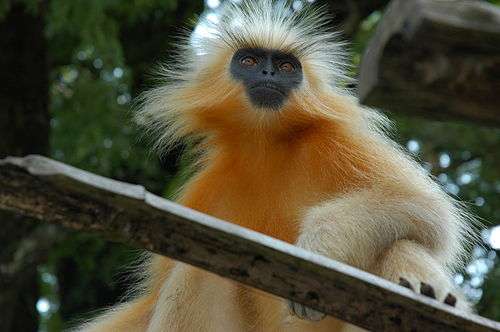
The order Primates contains humans and their closest relatives: lemurs, lorisoids, monkeys, and apes.
- Suborder: Strepsirrhini
- Infraorder: Lemuriformes
- Superfamily: Lorisoidea
- Family: Loridae
- Genus: Nycticebus
- Slow loris, Nycticebus bengalensis
- Genus: Nycticebus
- Family: Loridae
- Superfamily: Lorisoidea
- Infraorder: Lemuriformes
- Suborder: Haplorhini
- Infraorder: Simiiformes
- Parvorder: Catarrhini
- Superfamily: Cercopithecoidea
- Family: Cercopithecidae (Old World monkeys)
- Genus: Macaca
- Assam macaque, Macaca assamensis VU
- Rhesus macaque, Macaca mulatta LR/nt
- Subfamily: Colobinae
- Genus: Semnopithecus
- Gray langur, Semnopithecus entellus LR/nt
- Genus: Trachypithecus
- Golden langur, Trachypithecus geei EN
- Capped langur, Trachypithecus pileatus EN
- Genus: Semnopithecus
- Genus: Macaca
- Family: Cercopithecidae (Old World monkeys)
- Superfamily: Cercopithecoidea
- Parvorder: Catarrhini
- Infraorder: Simiiformes
Order: Rodentia (rodents)
Rodents make up the largest order of mammals, with over 40% of mammalian species. They have two incisors in the upper and lower jaw which grow continually and must be kept short by gnawing. Most rodents are small though the capybara can weigh up to 45 kg (99 lb).
- Suborder: Sciurognathi
- Family: Sciuridae (squirrels)
- Subfamily: Ratufinae
- Genus: Ratufa
- Black giant squirrel, Ratufa bicolor LR/lc
- Genus: Ratufa
- Subfamily: Sciurinae
- Tribe: Pteromyini
- Genus: Belomys
- Hairy-footed flying squirrel, Belomys pearsonii LR/nt
- Genus: Hylopetes
- Particolored flying squirrel, Hylopetes alboniger EN
- Genus: Petaurista
- Bhutan giant flying squirrel, Petaurista nobilis LR/nt
- Genus: Belomys
- Tribe: Pteromyini
- Subfamily: Callosciurinae
- Genus: Callosciurus
- Irrawaddy squirrel, Callosciurus pygerythrus LC
- Genus: Tamiops
- Himalayan striped squirrel, Tamiops macclellandi LR/lc
- Genus: Callosciurus
- Subfamily: Ratufinae
- Family: Spalacidae
- Subfamily: Rhizomyinae
- Genus: Cannomys
- Lesser bamboo rat, Cannomys badius LR/lc
- Genus: Cannomys
- Subfamily: Rhizomyinae
- Family: Cricetidae
- Subfamily: Arvicolinae
- Genus: Microtus
- Sikkim mountain vole, Microtus sikimensis LR/lc
- Genus: Microtus
- Subfamily: Arvicolinae
- Family: Muridae (mice, rats, voles, gerbils, hamsters, etc.)
- Subfamily: Murinae
- Genus: Mus
- Gairdner's shrewmouse, Mus pahari[3]
- Earth-colored mouse, Mus terricolor[4]
- Genus: Rattus
- Himalayan field rat, Rattus nitidus LR/lc
- Sikkim rat, Rattus sikkimensis VU
- Genus: Mus
- Subfamily: Murinae
- Family: Sciuridae (squirrels)
Order: Lagomorpha (lagomorphs)
The lagomorphs comprise two families, Leporidae (hares and rabbits), and Ochotonidae (pikas). Though they can resemble rodents, and were classified as a superfamily in that order until the early 20th century; they have since been considered a separate order. They differ from rodents in a number of physical characteristics, such as having four incisors in the upper jaw rather than two.
- Family: Leporidae (hares and rabbits)
- Genus: Caprolagus
- Hispid hare, Caprolagus hispidus CE
- Genus: Lepus
- Blacknaped hare, Lepus nigricollis
- Woolly hare, Lepus osostolus
- Genus: Caprolagus
- Family: Ochotonidae (pikas)
- Genus: Ochotona
- Black-lipped pika, Ochotona curzoniae
- Forrest's pika, Ochotona forresti LR/nt
- Glover's pika, Ochotona gloveri
- Large-eared pika, Ochotona macrotis
- Nubra pika, Ochotona nubrica LR/lc
- Royle's pika, Ochotona roylei
- Moupin pika, Ochotona thibetana LR/lc
- Genus: Ochotona
Order: Soricomorpha (shrews, moles, and solenodons)
The "shrew-forms" are insectivorous mammals. The shrews and solenodons closely resemble mice while the moles are stout-bodied burrowers.
- Family: Soricidae (shrews)
- Subfamily: Crocidurinae
- Genus: Crocidura
- Grey shrew, Crocidura attenuata LR/lc
- Southeast Asian shrew, Crocidura fuliginosa
- Horsfield's shrew, Crocidura horsfieldi
- Genus: Suncus
- Etruscan shrew, Suncus etruscus LC
- Asian house shrew, Suncus murinus LR/lc
- Genus: Crocidura
- Subfamily: Soricinae
- Tribe: Anourosoricini
- Genus: Anourosorex
- Mole shrew, Anourosorex squamipes LR/lc
- Genus: Anourosorex
- Tribe: Nectogalini
- Genus: Chimarrogale
- Himalayan water shrew, Chimarrogale himalayica
- Genus: Nectogale
- Elegant water shrew, Nectogale elegans LR/lc
- Genus: Sorex
- pygmy shrew, Sorex minutus
- Genus: Soriculus
- Bailey's shrew, Soriculus baileyi
- Hodgson's brown-toothed shrew, Soriculus caudatus
- Long-tailed brown-toothed shrew, Soriculus leucops
- Long-tailed mountain shrew, Soriculus macrurus
- Himalayan shrew, Soriculus nigrescens LR/lc
- Genus: Chimarrogale
- Tribe: Anourosoricini
- Subfamily: Crocidurinae
- Family: Talpidae (moles)
- Subfamily: Talpinae
- Tribe: Talpini
- Genus: Euroscaptor
- Himalayan mole, Euroscaptor micrura LR/lc
- Genus: Euroscaptor
- Tribe: Talpini
- Subfamily: Talpinae
Order: Chiroptera (bats)
The bats' most distinguishing feature is that their forelimbs are developed as wings, making them the only mammals capable of flight. Bat species account for about 20% of all mammals.
- Family: Pteropodidae (flying foxes, Old World fruit bats)
- Subfamily: Pteropodinae
- Genus: Cynopterus
- Greater short-nosed fruit bat, Cynopterus sphinx LR/lc
- Genus: Sphaerias
- Blanford's fruit bat, Sphaerias blanfordi LR/lc
- Genus: Cynopterus
- Subfamily: Pteropodinae
- Family: Vespertilionidae
- Subfamily: Myotinae
- Genus: Myotis
- Lesser mouse-eared bat, Myotis blythii LR/lc
- Whiskered myotis, Myotis muricola LR/lc
- Himalayan whiskered bat, Myotis siligorensis LR/lc
- Genus: Myotis
- Subfamily: Vespertilioninae
- Genus: Hesperoptenus
- Tickell's bat, Hesperoptenus tickelli LR/lc
- Genus: Pipistrellus
- Indian pipistrelle, Pipistrellus coromandra LR/lc
- Genus: Scotozous
- Dormer's pipistrelle, Scotozous dormeri LC
- Genus: Hesperoptenus
- Subfamily: Murininae
- Genus: Murina
- Round-eared tube-nosed bat, Murina cyclotis LR/lc
- Genus: Murina
- Subfamily: Miniopterinae
- Genus: Miniopterus
- Small bent-winged bat, Miniopterus pusillus LR/lc
- Genus: Miniopterus
- Subfamily: Myotinae
- Family: Molossidae
- Genus: Chaerephon
- Wrinkle-lipped free-tailed bat, Chaerephon plicata LR/lc
- Genus: Chaerephon
- Family: Rhinolophidae
- Subfamily: Rhinolophinae
- Genus: Rhinolophus
- Intermediate horseshoe bat, Rhinolophus affinis LR/lc
- Pearson's horseshoe bat, Rhinolophus pearsoni LR/lc
- Genus: Rhinolophus
- Subfamily: Rhinolophinae
Order: Cetacea (whales)
The order Cetacea includes whales, dolphins, and porpoises. They are the mammals most fully adapted to aquatic life with a spindle-shaped nearly hairless body, protected by a thick layer of blubber, and forelimbs and tail modified to provide propulsion underwater.
- Suborder: Odontoceti
- Superfamily: Platanistoidea
- Family: Platanistidae
- Genus: Platanista
- Ganges and Indus river dolphin, Platanista gangetica EN
- Genus: Platanista
- Family: Platanistidae
- Superfamily: Platanistoidea
Order: Carnivora (carnivorans)

There are over 260 species of carnivorans, the majority of which eat meat as their primary dietary item. They have a characteristic skull shape and dentition.
- Suborder: Feliformia
- Family: Felidae (cats)
- Subfamily: Felinae
- Genus: Catopuma
- Asian golden cat, Catopuma temminckii VU
- Genus: Felis
- Himalayan jungle cat, Felis chaus affinis LC
- Himalayan Pallas' cat, Felis manul nigripecta NT
- Genus: Lynx
- Turkestan lynx, Lynx lynx isabellinus NT
- Genus: Pardofelis
- Marbled cat, Pardofelis marmorata VU
- Genus: Prionailurus
- Leopard cat, Prionailurus bengalensis LC
- Fishing cat, Prionailurus viverrinus VU
- Genus: Catopuma
- Subfamily: Pantherinae
- Genus: Neofelis
- Clouded leopard, Neofelis nebulosa VU
- Genus: Panthera
- Indian leopard, Panthera pardus fusca VU
- Bengal tiger, Panthera tigris tigris EN
- Genus: Uncia
- Snow leopard, Uncia uncia VU
- Genus: Neofelis
- Subfamily: Felinae
- Family: Viverridae (civets, mongooses, etc.)
- Subfamily: Paradoxurinae
- Genus: Arctictis
- Binturong, Arctictis binturong LR/lc
- Genus: Paguma
- Masked palm civet, Paguma larvata LR/lc
- Genus: Paradoxurus
- Asian palm civet, Paradoxurus hermaphroditus LR/lc
- Genus: Arctictis
- Subfamily: Prionodontinae
- Genus: Prionodon
- Spotted linsang, Prionodon pardicolor LR/lc
- Genus: Prionodon
- Subfamily: Viverrinae
- Genus: Viverra
- Large Indian civet, Viverra zibetha LR/lc
- Genus: Viverricula
- Small Indian civet, Viverricula indica LR/lc
- Genus: Viverra
- Subfamily: Paradoxurinae
- Family: Herpestidae (mongooses)
- Genus: Herpestes
- Indian gray mongoose, Herpestes edwardsii LR/lc
- Small Asian mongoose, Herpestes javanicus LR/lc
- Crab-eating mongoose, Herpestes urva
- Genus: Herpestes
- Family: Felidae (cats)
- Suborder: Caniformia
- Family: Ailuridae (lesser panda)
- Family: Canidae (dogs, foxes)
- Genus: Vulpes
- Red fox, Vulpes vulpes LC
- Bengal fox, Vulpes bengalensis
- Genus: Canis
- Indian jackal, Canis aureus indicus LC
- Himalayan wolf, Canis lupus chanco CR
- Genus: Cuon
- Ussuri dhole, Cuon alpinus alpinus EN
- Genus: Vulpes
- Family: Ursidae (bears)
- Genus: Ursus
- Asiatic black bear, Ursus thibetanus VU
- Genus: Melursus
- Sloth bear, Melursus ursinus VU
- Genus: Ursus
- Family: Mustelidae (mustelids)
- Genus: Mustela
- Yellow-bellied weasel, Mustela kathiah LR/lc
- Siberian weasel, Mustela sibirica LR/lc
- Back-striped weasel, Mustela strigidorsa VU
- Himalayan weasel, Mustela sibirica
- Mountain weasel, Mustela altaica
- Genus: Martes
- Yellow-throated marten, Martes flavigula LR/lc
- Stone marten, Martes foina
- Genus: Arctonyx
- Hog badger, Arctonyx collaris LR/lc
- Genus: Lutra
- European otter, Lutra lutra NT
- Genus: Lutrogale
- Smooth-coated otter, Lutrogale perspicillata VU
- Genus: Aonyx
- Oriental small-clawed otter, Aonyx cinereus NT
- Genus: Mustela
Order: Perissodactyla (odd-toed ungulates)
The odd-toed ungulates are browsing and grazing mammals. They are usually large to very large, and have relatively simple stomachs and a large middle toe.
- Family: Rhinocerotidae
- Genus: Rhinoceros
- Indian rhinoceros, Rhinoceros unicornis VU
- Genus: Rhinoceros
Order: Artiodactyla (even-toed ungulates)
The even-toed ungulates are ungulates whose weight is borne about equally by the third and fourth toes, rather than mostly or entirely by the third as in perissodactyls. There are about 220 artiodactyl species, including many that are of great economic importance to humans.
- Family: Suidae (pigs)
- Family: Moschidae
- Genus: Moschus
- Himalayan musk deer, Moschus chrysogaster EN
- Black musk deer, Moschus fuscus EN
- Genus: Moschus
- Family: Cervidae (deer)
- Subfamily: Cervinae
- Genus: Axis
- Chital, Axis axis VU
- Hog deer, Axis porcinus LR
- Genus: Cervus
- Red deer, Cervus elaphus LR/lc
- Swamp deer, Cervus duvauceli
- Sambar, Cervus unicolor LR
- Genus: Axis
- Subfamily: Muntiacinae
- Genus: Muntiacus
- Indian muntjac, Muntiacus muntjak LR/lc
- Genus: Muntiacus
- Subfamily: Cervinae
- Family: Bovidae (cattle, antelope, sheep, goats)
- Subfamily: Bovinae
- Subfamily: Caprinae
- Genus: Budorcas
- Takin, Budorcas taxicolor VU
- Genus: Hemitragus
- Himalayan tahr, Hemitragus jemlahicus NT
- Genus: Nemorhaedus
- Himalayan serow, Capricornis thar NT
- Himalayan goral, Nemorhaedus goral LR/nt
- Genus: Ovis
- Argali, Ovis ammon VU
- Genus: Pseudois
- Bharal, Pseudois nayaur LC
- Genus: Budorcas
Order: Pholidota (pangolins)
Scaly anteaters, or pangolins, are armored with large, overlapping scales made of matted hair. There are approximately seven species of pangolin, of which two occur in Bhutan. Pangolins lack teeth, and eat only ants and termites with the assistance of a long sticky tongue.
- Family: Manidae (pangolins)
- Genus: Manis
- Indian pangolin, Manis crassicaudata LR
- Chinese pangolin, Manis pentadactyla LR
- Genus: Manis
See also
- List of chordate orders
- List of prehistoric mammals
- Lists of mammals by region
- Mammal classification
- Mammals discovered in the 2000s
Notes
- This list is derived from the IUCN Red List which lists species of mammals and includes those mammals that have recently been classified as extinct (since 1500 AD). The taxonomy and naming of the individual species is based on those used in existing Wikipedia articles as of 21 May 2007 and supplemented by the common names and taxonomy from the IUCN, Smithsonian Institution, or University of Michigan where no Wikipedia article was available. A full and accurate list of mammals of Bhutan can be found in "A Field Guide to the Mammals of Bhutan."
- Mammals of Bhutan
- Hutterer 1979, p. 5.
- Hutterer 1979, p. 3.
References
- Hutterer, R. (1979). "Ergebnisse der Bhutan-Expedition 1972 des Naturhistorischen Museums in Basel. Mammalia: Insectivora, Rodentia". Bonner zoologische Beiträge. 30 (1–2): 1–6.CS1 maint: ref=harv (link)
- Wangchuk, Tashi; et al. (2004). A Field Guide to the Mammals of Bhutan. Department of Forestry, Ministry of Agriculture, Royal Government of Bhutan. ISBN 99936-620-0-3.
- "The IUCN Red List of Threatened Species: Mammals of Bhutan". IUCN. 2001. Retrieved 22 May 2007.
- "Mammal Species of the World". Smithsonian National Museum of Natural History. 2005. Archived from the original on 27 April 2007. Retrieved 22 May 2007.
- "Animal Diversity Web". University of Michigan Museum of Zoology. 1995–2006. Retrieved 22 May 2007.
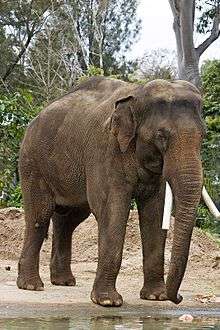

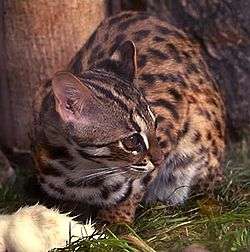
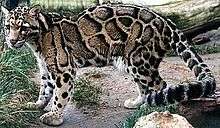
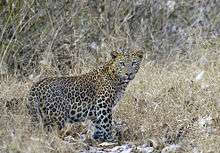

.jpg)

